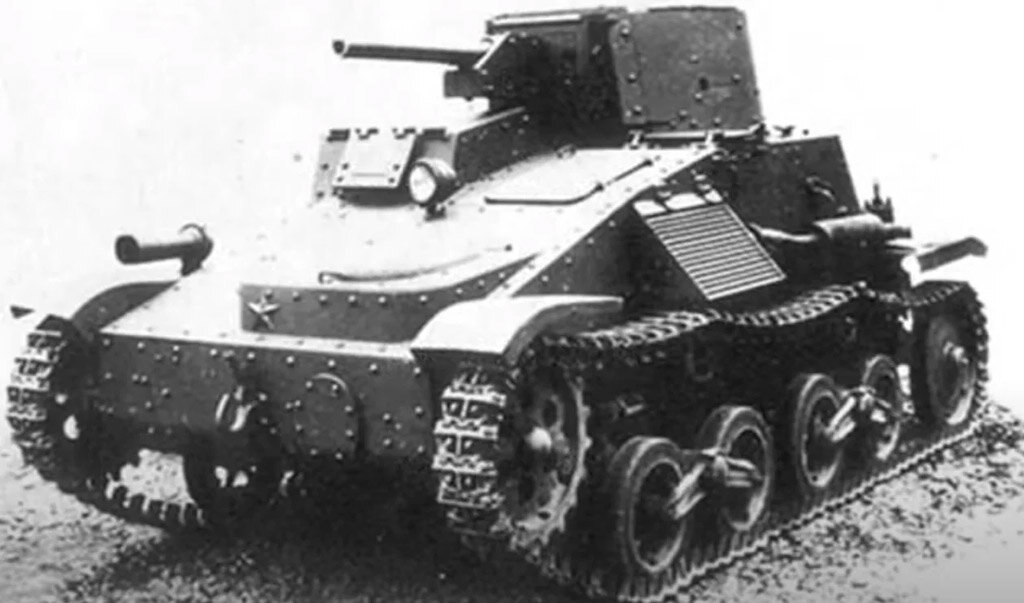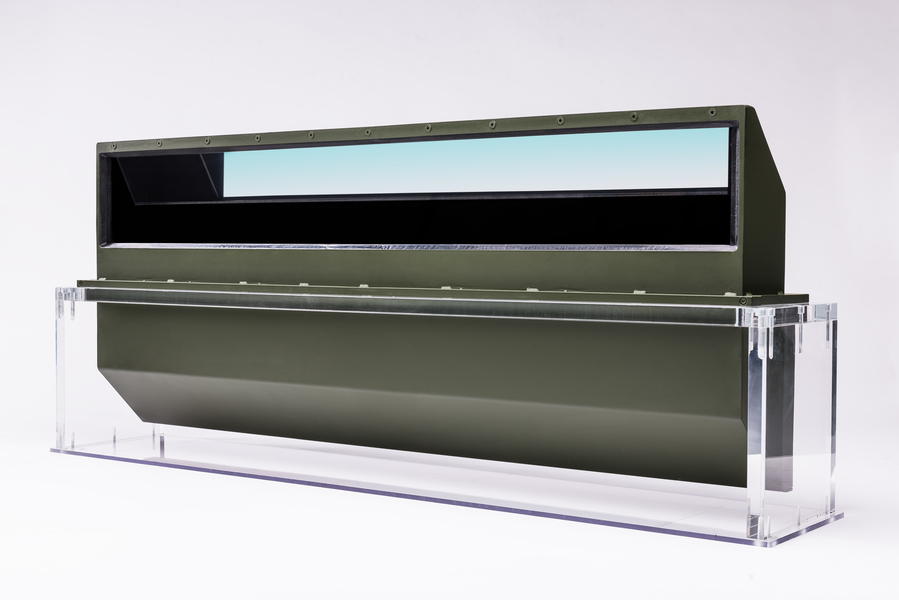
Reconnaissance tanks TK - export
Developed domestically at the turn of the 30s, improved versions of British small tracked vehicles, as conceived by Cardin-Loyd, were to become one of the commercial advantages in the fight for arms contracts both in Europe and abroad. Although the TK-3 and especially the TKS were devoid of a number of shortcomings of their foreign prototype and surpassed it in their characteristics, the Polish efforts to export these masses ran into a number of barriers that the young state had to resist and which were carefully exploited for years by the armed competition placed on foreign markets.
Inquiries regarding the possibility of purchasing domestic tankettes from both European and much more exotic ones for the Polish arms trade gave rise to a legal problem. Namely, in 1931, shortly after Colonel Grossbard, representing the Latvian army, got acquainted with the first samples of Polish wedges, it became possible to sell TK cars on the Daugava. However, according to the handwritten notes on the documents, the deal was quickly blocked, incl. as a result of the efforts of Colonel Kossakovsky, as this could jeopardize the contract with the English company "Vickers-Armstrong" (hereinafter: "Vickers"), which was opposed by the above-mentioned officer had several expectations of his own.
Such an unequivocal act of the head of DepZaopInzh. and DouBrPunk. count Kossakovsky, most likely, was supported by the intervention of the British military attaché, who asked for clarification of the rumors about the supposed removal of tanks to Riga. After the first emotions associated with some negligence in relation to the provisions of the agreement between the Republic of Poland and Vickers subsided, the Polish side took a more balanced attitude towards the issue of exporting wedges for the northern neighbor. Not without reason, and with apparent wariness, it was recognized that the unfortunate contractor was more interested in obtaining a license and independently manufacturing machines at home than in more serious purchases on the Vistula.
However, the Latvian theme will remain relevant until at least 1933, when the display of Polish tanks returning from a successful trade visit to Estonia, which will be discussed later, is canceled at the last moment. This event was unexpected and definitely negatively perceived, especially since the Polish echelon was welcomed even by the highest Latvian officers during a trip to Riga. Reflecting on the reasons for the sudden change in decision, it was pointed out that the Soviets did not want to bring Poland closer to their Baltic states. The last mentions of the Latvian trade direction appear in the documents of 1934, and they are already of a formal nature.
However, an outwardly innocent trade action at Poland's northern neighbor caused a snowball effect. On January 4, 1932, SEPEWE Export Przemysłu Obronnego Spółka z oo addressed the head of the Second Border Guard Department with a request to inquire about the sale of Polish-made weapons - cap. The sender and the newly developed tankettes TK (TK-3). The inspiration for the export action was to be Państwowe Zakłady Inżynierii (PZInż.), an expansion-ready, simple and fast production of small tracked vehicles. The conclusion on this matter was finally issued by Colonel Tadeusz Kosakowski of the Engineering Supply Department. Subordinate to the Ministry of Military Affairs. the authorities considered that there were no obstacles in this case and that all commercial enterprises should only depend on the choice of countries covered by the export action generally approved by SEPEWE. It is worth noting that the decision was signed by Colonel V. Kosakovsky, Lieutenant Colonel Vladislav Spalek.
However, the apparently exaggerated favorable opinion was at odds with the later moves of the Polish side, especially the Polish embassy in London. From the secret and extensive note of our attaché dated April 27, 1932, we learn that in the first days of this month, the English. Brodovsky from PZInż., whose task was to negotiate with the Vickers company regarding the production of a batch of reconnaissance tanks for Romania by Polish factories.
As the adviser of the diplomatic mission, Janshistsky, stated in his note: “... The agreement with Vickers on the purchase of a license for Carden Loyd VI tanks by PZInż., signed by me in 1930, does not contain a clause regarding the production of tanks. tanks for foreign countries, so it can be interpreted in different ways. Visit of an engineer Brodovsky and a few conversations with Vickers yielded little, except for the English arms magnate, who was waiting for the official, i.e. a written question from the Polish side regarding possible reservations.
Application for the possibility of manufacturing wedges at PZInzh. in favor of a third country, met with an unclear response from the addressee, further diluted by transferring it to the decision of the company's top management. On April 20, the British informed the Polish embassy that they could not give a binding answer until they consulted the Romanian factors, which the Polish diplomat described as "predictable". Thus, it can be suspected that the concern is ready to submit a counter-bid, thereby bypassing the efforts of Polish exports.
All's adviser did not hide his surprise at the improper negotiation procedures used by the foreign manufacturer, which he expressed in his correspondence: … There was a paragraph in the Vickers letter that outlined my interpretation of the contract in volume PZInż. are limited to the production and sale of tanks exclusively for the use of the Polish government. There was nothing of the sort in my letter. This too, I immediately responded to Vickers, laying out the main points and asking him to take note of my interpretation of the license agreement. In response to my second letter, the company took note of my comments, but once again insists on its restrictive interpretation of the contract.
The matter was hushed up for several days, after which on April 27 the Polish embassy in London received information that on May 9, 1932, one of Vikes directors, General Sir Noel Burch, would arrive in Warsaw to discuss licensing and… .. another matter with the Polish authorities, and that they hope that both of these issues will be resolved peacefully.
The second issue, well understood by Polish diplomacy, was the purchase of foreign equipment for anti-aircraft artillery by the Polish armed forces and the fear of the British that American equipment (most likely the fire control devices) would be the winner in the proceedings on the Vistula River.
At the same time, Colonel Bridge, who was in contact with Vickers, informed Allski's adviser, who was in contact with him, that the firm was increasingly feeling competition from Polish arms and ammunition factories, and that due to capital located in Bucharest and difficulties with dividend collection, Vickers should maintain an unambiguous position. As you might guess, it was for PZInż. and SEPEWE negative, unless the announced visit to Warsaw allows finding a compromise acceptable to both sides.
In the final part of his note, an employee of the Embassy of the Republic of Poland in London wrote to the head of the XNUMXth department of the Border Guard: Reporting to Mr. to the same tricks as in her first letter, and that I do not know what it should be attributed to. Unfortunately, the disappointment that accompanies the document will not be the last.
The case of a contract with Vickers for Carden-Loyd tankettes will soon be discussed again on the Vistula in connection with the discovery of defects in armor plates purchased in England for the manufacture of the first series of TK-3 tankettes. A little later, new scandals would break out on the Vistula, this time about conscientious 6-ton Vickers Mk E Alternative A. 47 mm tanks, purchased with new two-gun tank turrets.
Therefore, it is clear that in contacts with the Vickers-Armstrong Ltd. the Polish side was not seen as a serious player. While it is understandable that the manufacturer stands up for licensing rights, positioning Poland as a permanent recipient of various types of weapons as a second-class buyer was definitely a bad prognosis both in terms of economic and political relations.
On August 30, 1932, Second Deputy Minister M. S. Troops spoke on this subject. (L.dz.960 / i.e. contracts for the supply of Carden-Loyd Mk VI vehicles. Most likely, such an unambiguous position was supported by the argument that the TK tank was already protected by a secret patent at that time (only Polish - Light fast tank 178 / t .e. 32), as well as equipment for its transportation - a motor vehicle and a rail guide (secret patents No. 172 and 173).
Referring to the stated position, arguments related to the complete freedom to dispose of one's own patent were willingly used, which should have removed or at least mitigated any disputes that may arise in this context with an English company. The problem was never resolved, since in October 1932 the management of the 3330th division of the Border Troops in the secret section “Export of the TK tank” (No. There is a well-founded fear of complications in relations with Vickers, since the TK is essentially just a modification of the Carden- Loida The right to the product of the latter type was acquired by PZInż. license, subject to § 32, that the tanks would be produced for the needs of the Polish state.
Suddenly changed his mind and DepZaopInzh. stating that: ... the contract not only does not mention anything about the possibility of selling for export, but it does not even provide for the possibility of their production beyond the needs of the Polish State. In this situation, there were two possible solutions:
